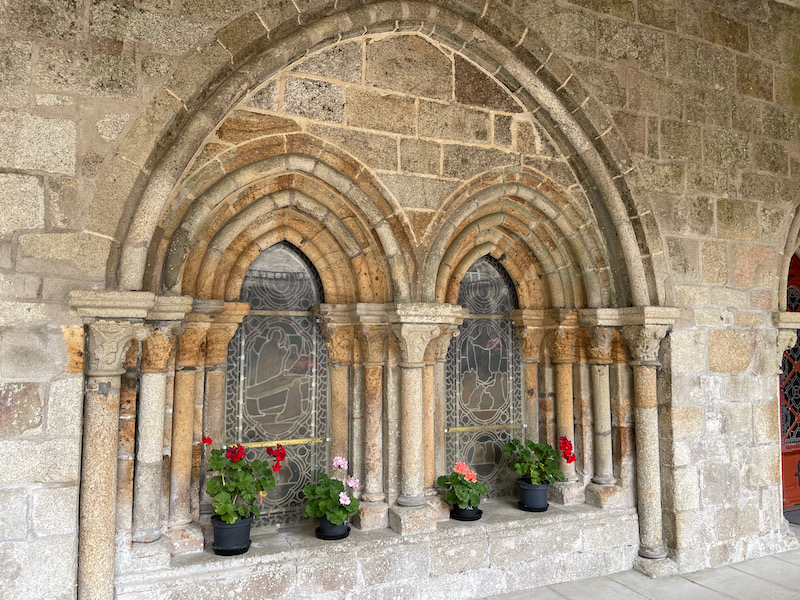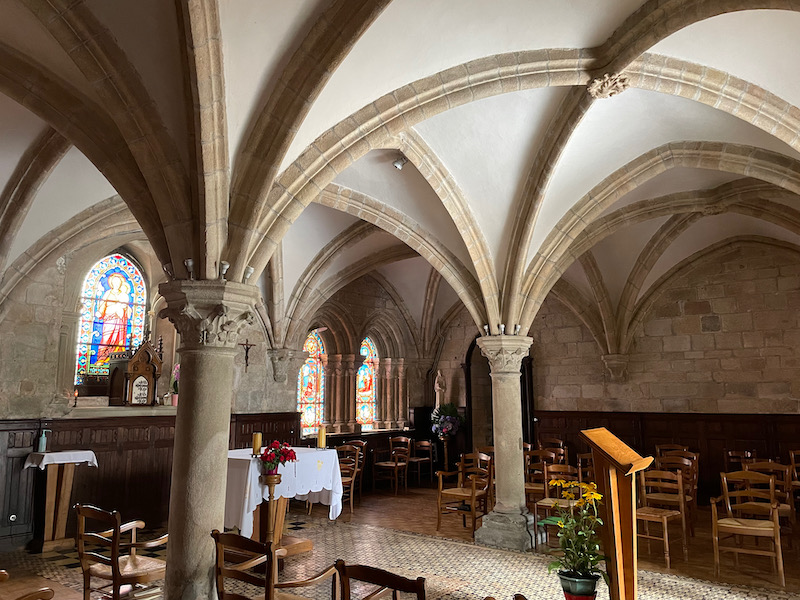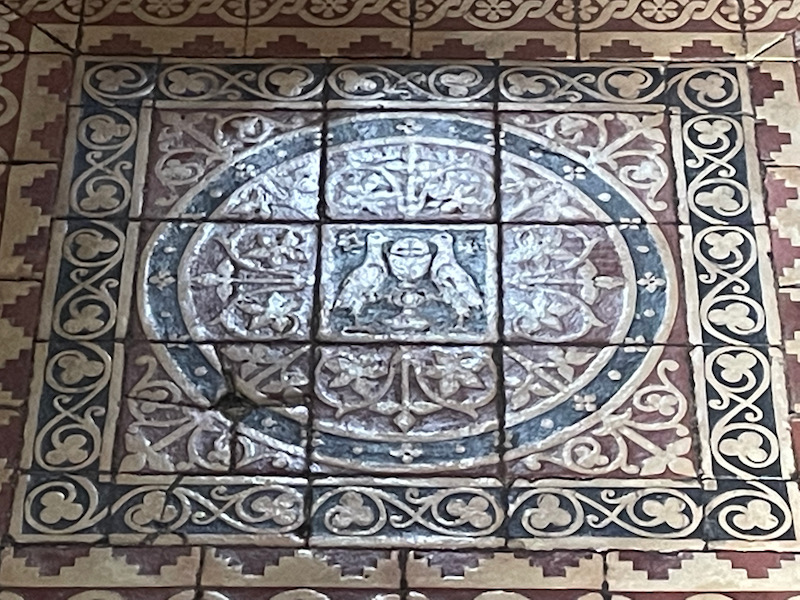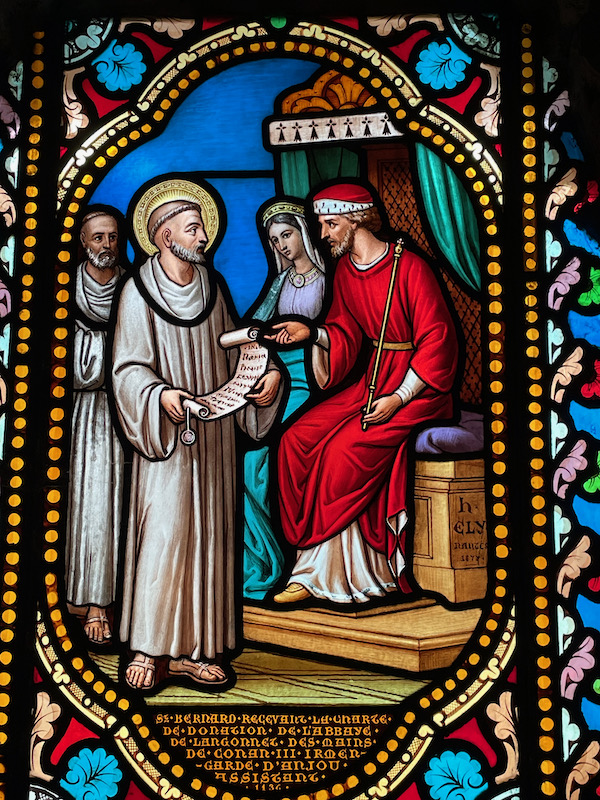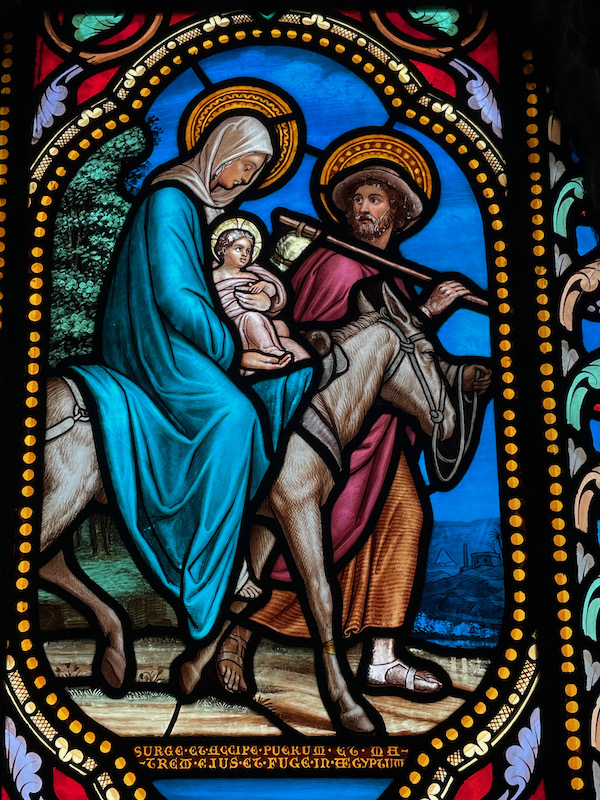Our Blog - Langonnet, France
I sometimes find town names interesting ... this one means "the monastery of Conet", with Conet (or Kynwyd in Welsh) being a Welsh saint who came to Brittany. The foundation of Langonnet probably dates back to the 6th century, at the time of the emigration of Bretons from Great Britain. Like many rural towns in Brittany, Langonnet has been in decline since the "Breton miracle", which is the the agricultural revolution of the 1950s which put an end to traditional peasant civilization in Lower Brittany. Indeed, the number of inhabitants fell from almost 5,000 after the Second World War to just under 2,000. The decline has been leveling off since the 1980's, when a few foreign families arrived, particularly English, who have restored several abandoned farms.
Abbaye Notre-Dame de Langonnet was founded in 1136 but only the 13th century chapter house remains from the original buildings. The school and residence buildings date from around 1750, the cloister was built in the 1930's, and the chapel is from the late 1800's. Today, most of the buildings (other than the chapel, cloister, and chapter house) are part of a retirement home and there is also a museum of African art there.
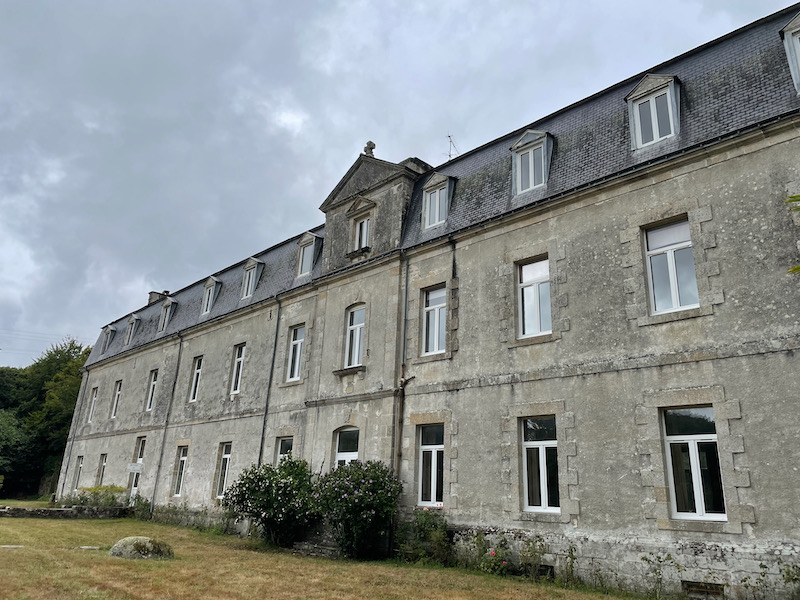
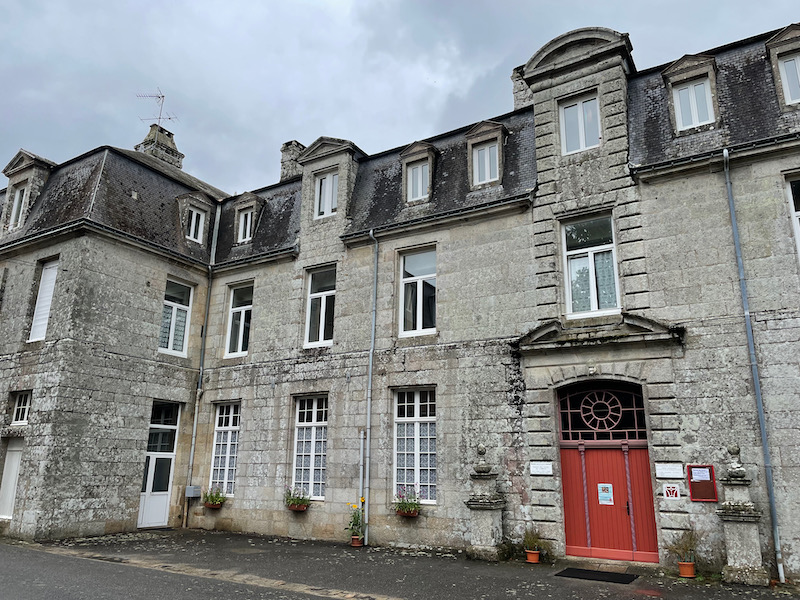
The cloister, as noted above, is from the 1930's but uses Romanesque arches. But the architecture of having the stones visible around the arch but then stucco'd above is very typical from that timeframe.
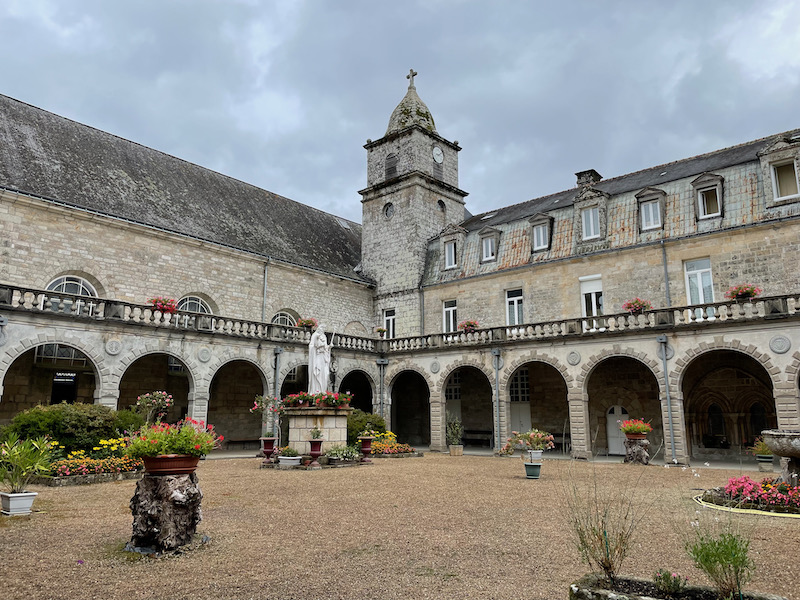
The Chapel has a low roof which reminds me more of typical Brittany parish churches than Abbey churches. It has a wooden inverted-boat ceiling but instead of just being painted a solid color, this one has much nicer painted decoration. The ceiling over the main altar is much more elaborate. The carved wood choir stalls aren't as tall as many I've seen, but the carving is quite elaborate. The stained glass windows are a bit more recent, dating from the early 1900's.
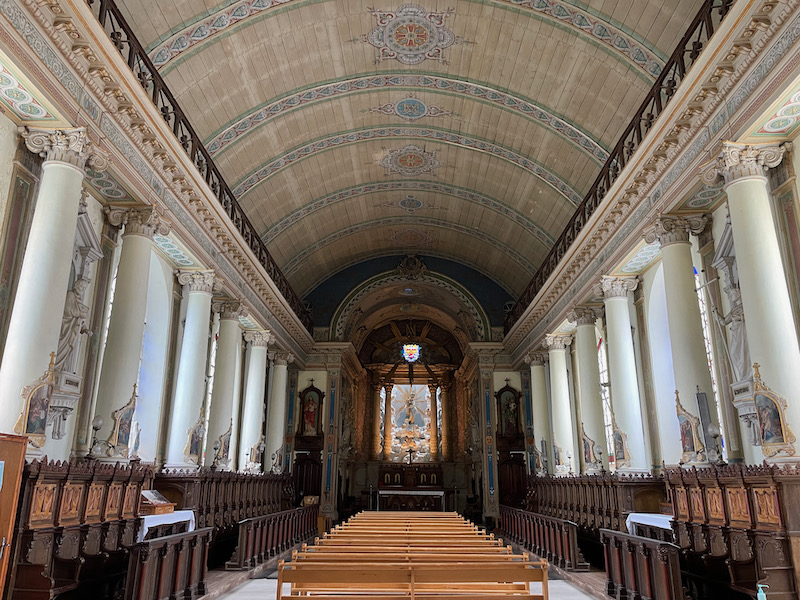
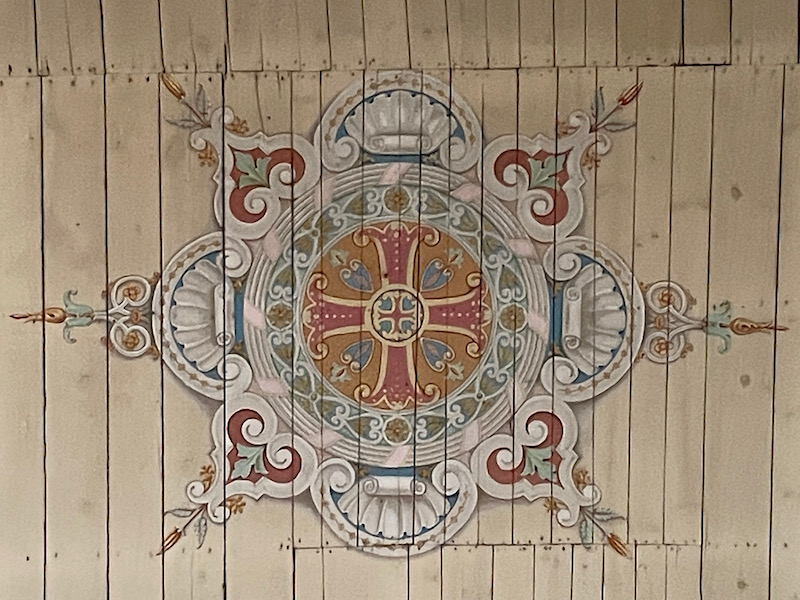
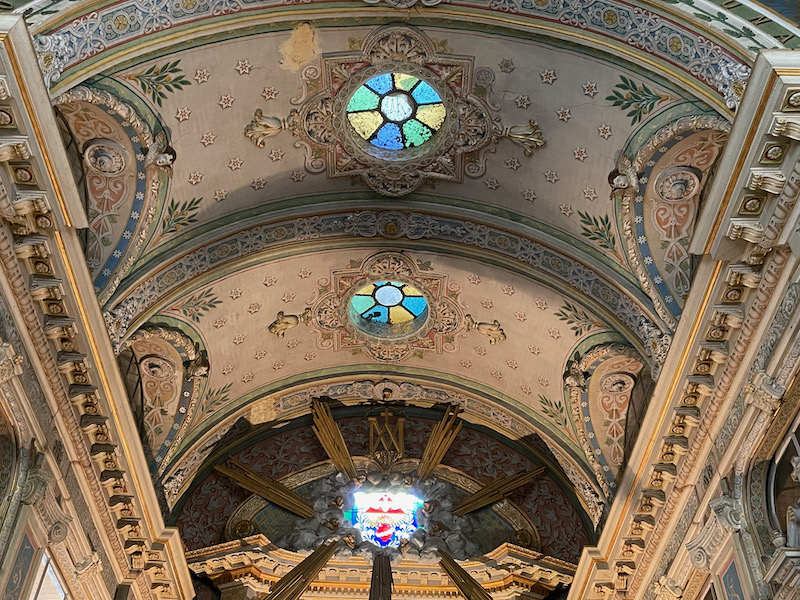
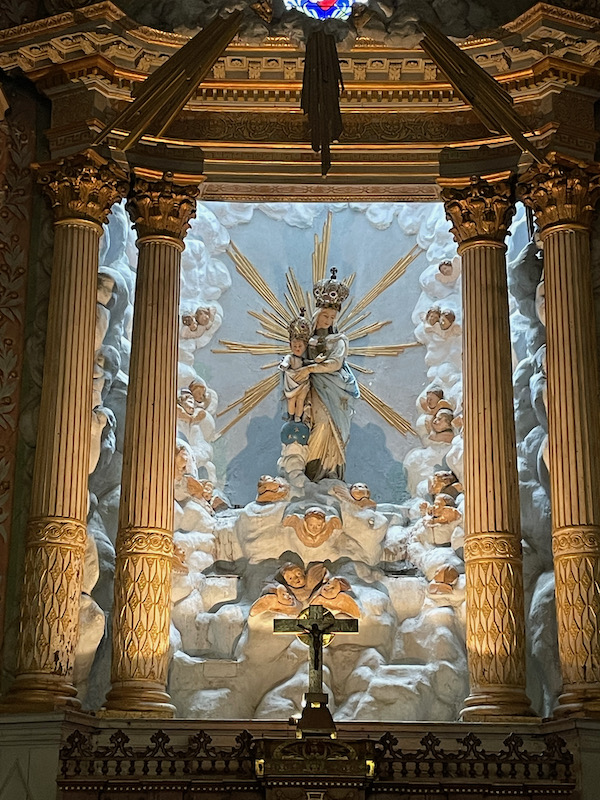
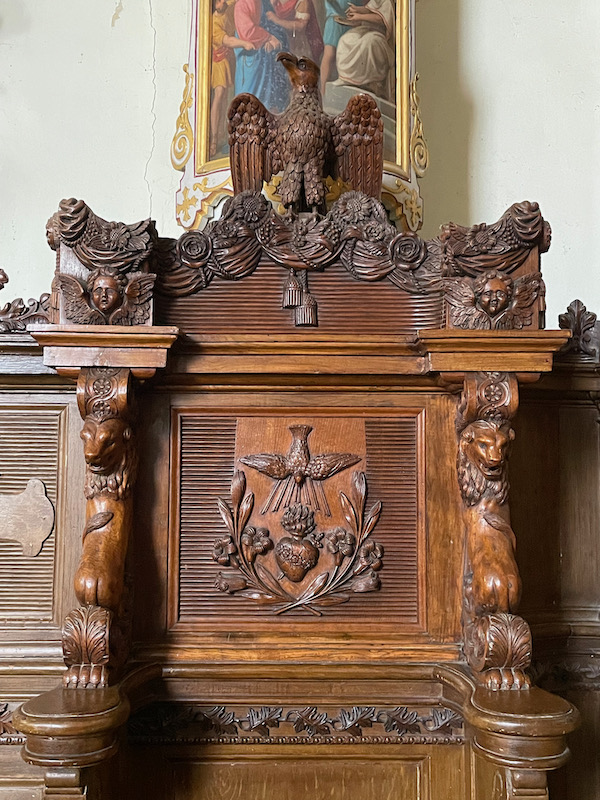
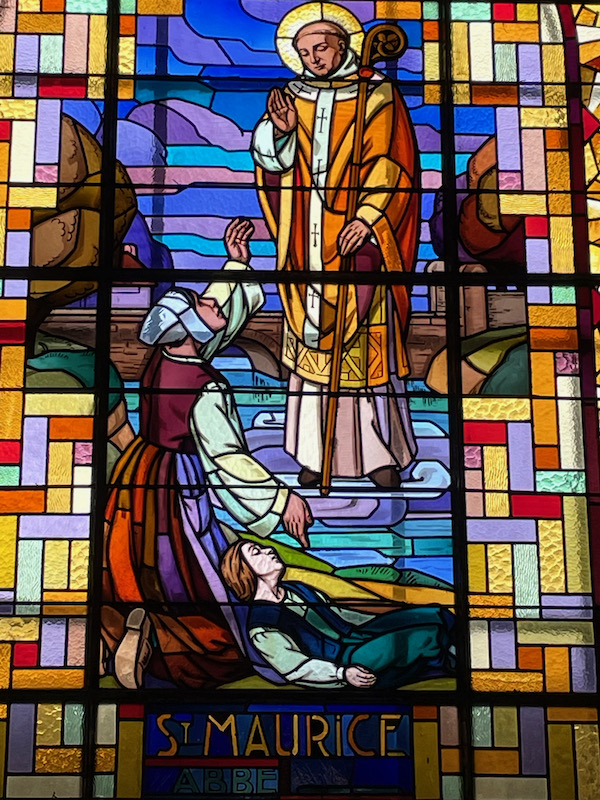
The church houses the relics of Saint Léon, who was a martyr in the 4th century. The body was discovered in a cemetery in 1843 and then moved around a bit ... it went to Rome before going to another chapel in Brittany before coming here in 2012.
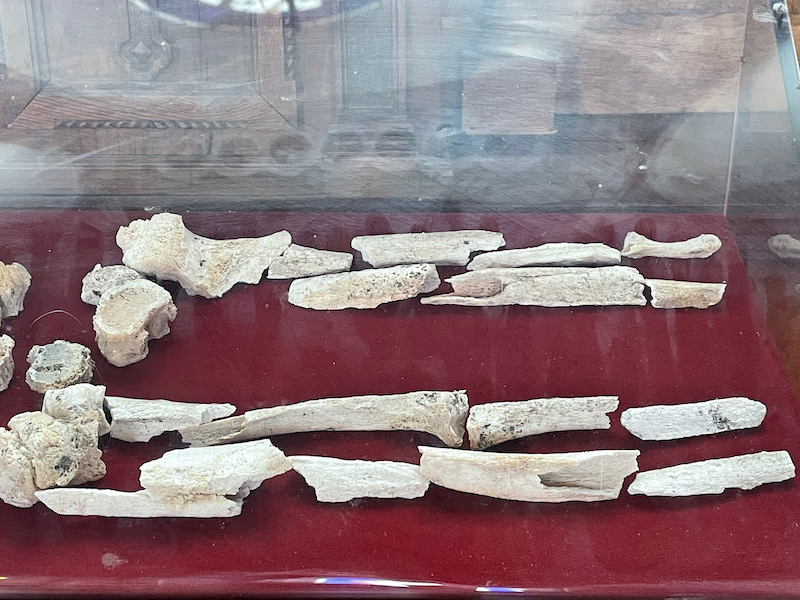
From the cloister, the chapter house door is flanked on each side by two twin bays. The chapter house has three bays, whose stone and cross-ribbed vaults rest on columns with capitals adorned with foliage. The tile floor has a lovely pattern with two doves in the middle. The stained-glass windows were replaced in 1877 by an artisan from Nantes.
